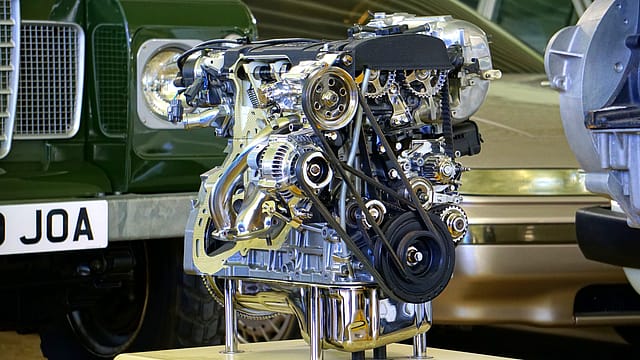Auto component companies face an uncertain future
ADVERTISEMENT

Thousands of auto component makers and aftermarket players risk shutting down in the next 8-10 years as they are ill-prepared for a future where new and disruptive technologies like electric vehicles, and autonomous or self-driving cars take over the roads.
As new ideas and technologies in the automobile sector come to the fore everyday, the $51 billion Indian auto component industry is waiting for the government or one of its agencies to draw up a detailed road map on the future of mobility. Unless there is some clarity on the automakers’ technology play in India and the development of the ecosystem that goes along with it through some well-defined policies and notifications, both the auto and component makers will continue to live in a state of uncertainty.
“Till now, the journey has been good, but it is the future that I am most worried about,’’ says Vinnie Mehta, director-general, Automotive Component Manufacturer Association of India (ACMA), the industry body representing the interests of the component manufacturers.
The Indian auto components industry comprises 10,000-20,000 home-grown auto components companies. Then there are also about 50,000 low-technology players, which cater to the aftermarket.
January 2026
Netflix, which has been in India for a decade, has successfully struck a balance between high-class premium content and pricing that attracts a range of customers. Find out how the U.S. streaming giant evolved in India, plus an exclusive interview with CEO Ted Sarandos. Also read about the Best Investments for 2026, and how rising growth and easing inflation will come in handy for finance minister Nirmala Sitharaman as she prepares Budget 2026.
Nearly 50% of the domestic auto component players are either making engine parts or the transmission drive, which will have no place in an electric car, which runs on batteries. There is also a question mark on the kind of batteries that will ultimately survive; whether it will be lithium ion or something else will depend mostly on the cost of the battery and its safety features.
An uncertain future
There are two broad trends that are already visible. First, the demand for all vehicles—two-, three- and four-wheelers, commercial vehicles, and tractors, etc.—is expected to rise because of the growing affluence and rising aspirations of Indians. Which means that in the next 5-10 years, auto component manufacturers will continue to see a steady flow of income. But after that, as newer technologies make their mark, many of these players might fall by the wayside as they won’t be prepared to cater to the demand for newer components.
Second, these companies will need a few years of preparation to cater to disruptive technologies like autonomous or self-driving cars. Then there are also the concepts—connected cars, which talk to each other or to a dedicated control centre, electric vehicles, and shared mobility popularly called ACES (automated, connected, electric, and shared).
Now this is where the confusion begins. None of the stakeholders seem to have any clarity on what the car technology of tomorrow will be like. Whether it will be pure electric, hybrid (conventional fuel plus electric), run on fuel cells, or methane. And the government has only added to the confusion. The government has spoken about going fully electric by 2030, but there is still no comprehensive policy or directive, instead just a lot of to and fro on the matter.
In this scenario, auto and component manufacturers are adopting a wait-and-watch policy, refusing to take a serious bet on any single technology. And even those that have managed to get limited orders for electric cars, are importing the components rather than placing orders with domestic manufacturers.
Add to that, the finance ministry has levied 43% goods and services tax (28% GST plus 15% cess) on hybrid models, while limiting it to just 5% on electric cars.
“Instead of being technology-agnostic and allowing the carmakers to decide which technology they are most comfortable with and wish to invest, the finance ministry is forcing them to take the pure electric vehicle route,’’ says Mehta.
Aftermarket
The nearly 50,000 small companies or aftermarket players that cater to the spare car parts market will face the worst fate. The reason: While a conventional car has nearly 3,000 moving parts, which suffer from a lot of wear and tear, an electric car will have less than 200 parts and very little wear and tear.
These companies might completely run out of business once electric cars become a reality.
Auto component makers also face stiff competition from their Chinese counterparts, which are already global leaders in electric mobility. Chinese players are already offering these products and components off the shelf— both to Indian, as well as global players, and at relatively cheap rates.
The next 10-15 years are crucial for the industry, that saw a turnover of Rs 3,45,565 crore in the last financial year. Till the original equipment manufacturers (OEMs) start making investments because of government demand or from the private sector, they too will continue to be in the dark and remain devoid of orders.
The fate of these players rests with the government, which will have to detail a comprehensive road map for the sector at the earliest or the long-manufacturing tail of the auto component industry will suddenly be cut short.
